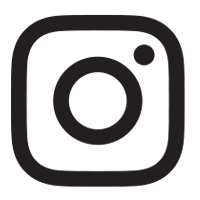WORKPLACE LEARNING: “Discovering the Yorklands [2]”
Instructor: Dr. Peter Goddard
Workplace Supervisor: Ms Norah Chaloner, President, Outreach and Engagement, Yorklands Green Hub, and other YGH executive.
Interested students should contact: Dr Goddard, pgoddard@uoguelph.ca [3]
Course Format:
You will be conducting independent work and attending meetings with the research and activist team. Four scheduled class meetings (their day and time to be determined during the first week of class) will take place remotely in a synchronous environment, which you can access through Webex or other agreed-upon Web meeting tool.
Course Synopsis:
The Yorklands Green Hub [2] (YGH) is a volunteer-driven non-profit corporation working towards preserving and celebrating the unique cultural and natural heritage of the former Guelph Correctional Centre (GCC). The GCC is owned by the Province of Ontario and control has been transferred to Infrastructure Ontario ahead of an expected sale. This presents a one-time opportunity for our community to secure this ecologically important landscape and permanently preserve its historic structures, while creating a compelling public space. The YGH board envisions an educational living ‘green hub’, with endless possibilities and areas for collaboration. Some of these include heritage conservation, urban agriculture, walking tours, indoor and outdoor displays, rotating exhibits, workshops, lectures, events, and educational materials that bring community members closer to nature.
The GCC, also known as the Ontario Reformatory, has a long and proud history as a world leader in the move away from incarceration as a form of punishment toward the use of productive work and training as a means to rehabilitate inmates and give them employable skills for life in the community. The Center also has a long tradition of self- sufficiency, producing nearly everything needed to operate and feed a closed facility on site. Throughout the years of operation, the property was home to farming and industrial operations, where thousands of inmates received training and worked on a 100-acre farm and in the trades. From a cannery to a fish farm, from upholstery to milling shops, from planning mills to quarries, from farm and greenhouse work to landscaping, the institute was mandated to operate with the intent to be self-sufficient and improve with the times.
When the province chose to streamline the correctional system, the Guelph facility was among fourteen sites closed in 2001. It has remained vacant since that time. Yorklands Green Hub works to bring together businesses, organizations, and people of all ages and interests – to learn, work, share and innovate, with the common purpose of being engaged stewards of our land, food, water, and cultural heritage.
There is an excellent opportunity to better understand the “Cultural heritage” embedded not only in the land and buildings, but also in the intangible heritage value in memories of shared values and traditions of the site. History 3480 students can help YGH by developing a full chronological history of the site which includes layers of history which have been overlooked or fall outside of the common narrative. This may even be accompanied by artifacts, photographs, and artwork which has never been shared with the public. And students may find opportunity to develop historical media and forms – guided walks; memorial plaques, podcast, etc – which reflect the students’ interests.
Yorklands Green Hub Projects Winter 2023:
1. Agricultural Endeavours
YGH expects that there is lots of scope for research into the various agricultural endeavours at the OR. They may be of particular interest because there are linkages between the agricultural programs at the OR and the U of G. The dairy farming program at the OR seems to have had a high profile and produced a great many champion animals. I expect that there would also be materials relating to the role the OR played in producing food for correctional facilities across the province. I think that the Guelph Museum would have some helpful source materials and newspaper reports and the OR Annual Reports should be fruitful sources. I would also expect that the University might have some helpful source materials. The Vet school did research at the OR also I believe and their archives would have some info. There was some connection from the vet school and the development of the Canada Horse which was bred specifically for the World War 1 since the draft horses were bogged down in the mud with supplies and the veterinarian father of Col. John McCrae responded to his famous son’s letters of concern about the horses by sending a ship full of newly cross bred Canada horses that were lighter on their feet.
2. Sustainability/Self-sufficiency
It would be interesting to see someone do some work on the degree to which the OR was a model with respect to sustainability and self-sufficiency. For instance, the site of the OR was selected, in part, because it contained a wealth of stone that could be quarried to build the buildings. Inmates quarried the stone and built the buildings for their own prison while learning marketable skills. After the buildings were completed, inmates continued to use quarried stone and fieldstone to beautify the grounds. The inmates produced food for their own consumption and excess production was shipped to other provincial correctional facilities. Annual reports will have good data to collect for this information. Sustainability was a huge concern then as it is now. It was a model of change in this regard.
3. Aboriginal Inmates at the OR
The land that the OR occupied has a rich history of Aboriginal occupation. Archeological studies of the site have found evidence of a major Aboriginal occupation on the portion of the site west of the Eramosa River. The overrepresentation of the Aboriginal community in the inmate population at the OR (and other correctional facilities across Canada) is a difficult example of our country's racist history that needs to be acknowledged and analysed.
On the other hand, there may be a good news story with respect to the adoption of Aboriginal cultural practices, such as smudging, sweat lodges and art, at the OR. Ones that could lead us in the re-development of the OR grounds with public engagement and interactive programs on Indigenous ideas in small longhouse of activities for the school children for example.
Learning Outcomes:
By the successful completion of this course, an assiduous student will have learned to:
- apply library, archival and museum research practices developed in History Program;
- build on and expand historical research for an interested public and for the Yorklands Green Hub community program and Campaign in Winter 2023;
- communicate compelling history for use in media platform(s)
- identify key factors and forces in the prehistory, the history and the evolution of the Ontario Reformatory/Yorklands;
- critically reflect upon their own work;
- identify gaps in narratives and provide insight into how to integrate or acknowledge through historical interpretation.
Methods of Evaluation and Weights:
Development of research and/or communication proposal - 10%
Execution of research and/or communication project - 50%
Weekly Critical Reflections that are submitted in two instalments - 15%
Final Report/finished research and/or communication 2000 words - 25%
No Textbook Required
Project Timeline
Week 1: Pre-arranged meeting on-site with Norah Chaloner and members of YGH Executive to discuss the project. Peter Goddard will attend. Guidelines will be established for selecting topics and approaches to historical research and communication of the former Ontario Reformatory/Guelph Correctional Centre, and its associated heritage. Three further meeting times scheduled.
Weeks 1-3: Historiographical Research and project conceptualization.
Week 3: Proposal due
Weeks 4-12: Research and development of communication approach
Week 6: First collection of weekly Reflections is due covering weeks 1-5
Week 12: Second collection of weekly Reflections is due covering weeks 6-10
Week 13: Final report/critical reflection/presentation of finished project.
Articles will be submitted at various points over the semester and meetings will be held with Dr. Goddard
**Please note: This is a preliminary web course description only. The History Department reserves the right to change without notice any information in this description. The final, binding course outline will be distributed in the first class of the semester.**




